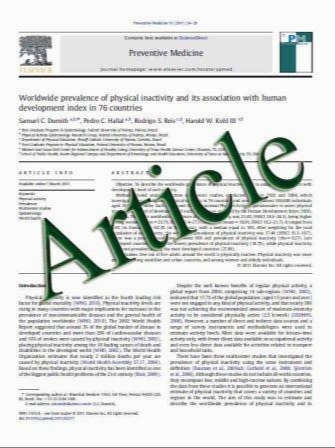First-line bevacizumab in combination with weekly paclitaxel for metastatic breast cancer: efficacy and safety results from a large, open-label, single-arm Japanese study
- نوع فایل : کتاب
- زبان : انگلیسی
- مؤلف : Kenjiro Aogi Norikazu Masuda Shinji Ohno Takashi Oda Hiroji Iwata Masahiro Kashiwaba Yasuhiro Fujiwara Shunji Kamigaki Yoshinori Ito
- چاپ و سال / کشور: 2011
Description
Despite extensive evaluation of first-line bevacizumab- containing therapy in randomized trials in locally recurrent/metastatic breast cancer (LR/mBC), data from Japanese populations are limited. We conducted a phase II study exclusively in Japanese patients to evaluate bevacizumab combined with weekly paclitaxel. Patients with HER2-negative measurable LR/mBC who had received no prior chemotherapy for LR/mBC received bevacizumab 10 mg/kg, days 1 and 15, in combination with paclitaxel 90 mg/m2, days 1, 8, and 15, repeated every 4 weeks, until disease progression, unacceptable toxicity, or patient/physician decision. Co-primary endpoints of this single-arm open-label phase II study were progression-free survival (PFS) and safety. A total of 120 patients (median age 55 years) received study therapy. At the time of data cut-off, the median duration of therapy was 11.1 months (range 0.5–24.7 months). Median PFS was 12.9 months (95% CI: 11.1–18.2) according to Independent Review Committee assessment and 14.9 months by investigator assessment. Median PFS was 9.6 months in the subgroup of 38 patients with triple-negative LR/mBC. The overall response rate was 74% (95% CI: 64.5–81.2%). Median overall survival (OS) was 35.8 months (95% CI: 26.4—not estimated) and the 1-year OS rate was 88.9% (95% CI: 83.2–94.6). The regimen was well tolerated and the safety profile was generally consistent with previous reports of bevacizumab–paclitaxel combination therapy. Grade 3 hypertension was reported in 17% of patients. Grade 4 hypertension, grade 3/4 proteinuria, and gastrointestinal perforation were absent. There were no new bevacizumab safety signals. In 50 patients (42%), treatment was continued for C1 year. Conclusion: The high activity of firstline bevacizumab in combination with weekly paclitaxel observed in our study confirms the results of the E2100 trial. Our results suggest that the activity and tolerability of first-line bevacizumab-containing regimens demonstrated in E2100 can be reproduced in Japanese populations.
DOI 10.1007/s10549-011-1685-x Received: 23 May 2011 / Accepted: 13 July 2011


